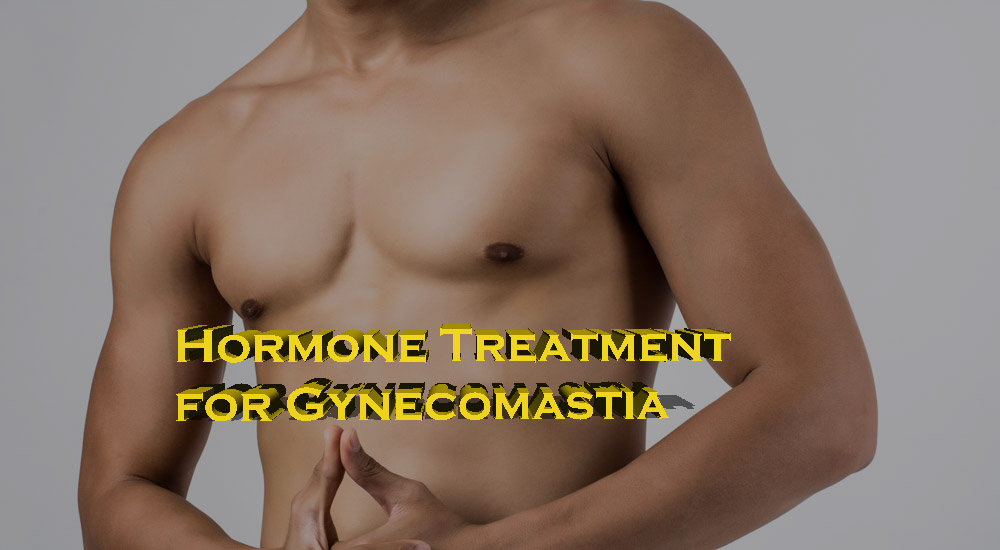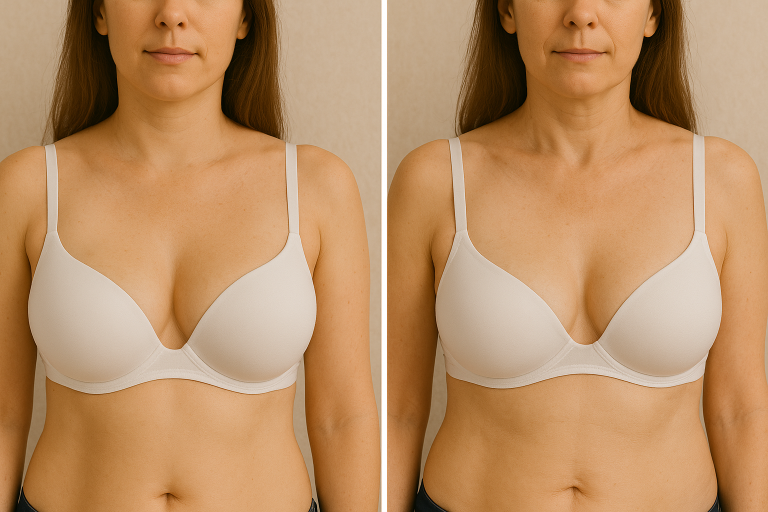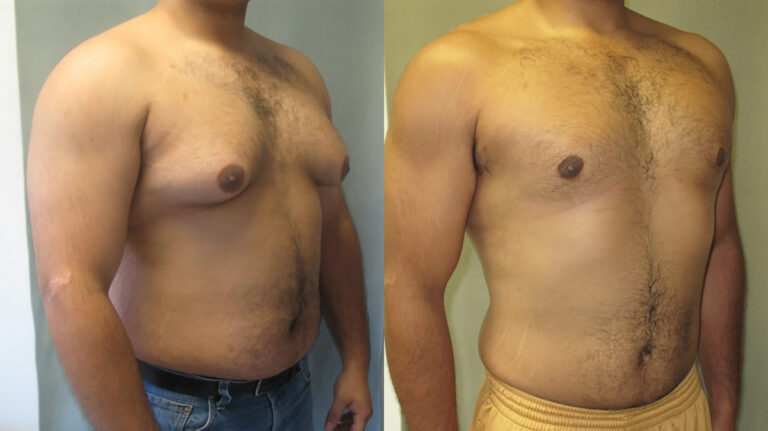Gynecomastia can be an uncomfortable situation . Hormone treatment is the best way to decrease the size of your breasts.find out more here.
Breast enlargement is a common problem for men and women at any age. Hormone treatment is a safe and effective option for this condition. You can use hormone therapy to reduce fat in the breasts, reduce breast size, and restore a more masculine appearance.
However, it is not always clear how early one should start hormone treatment for this condition. That’s why you need to find an expert to help you figure it out. In this case, Dr. Tarek is one of the best male breast surgeons in Dubai.
This article will thoroughly discuss treatment options, side effects, and their results.
What Is Gynecomastia?
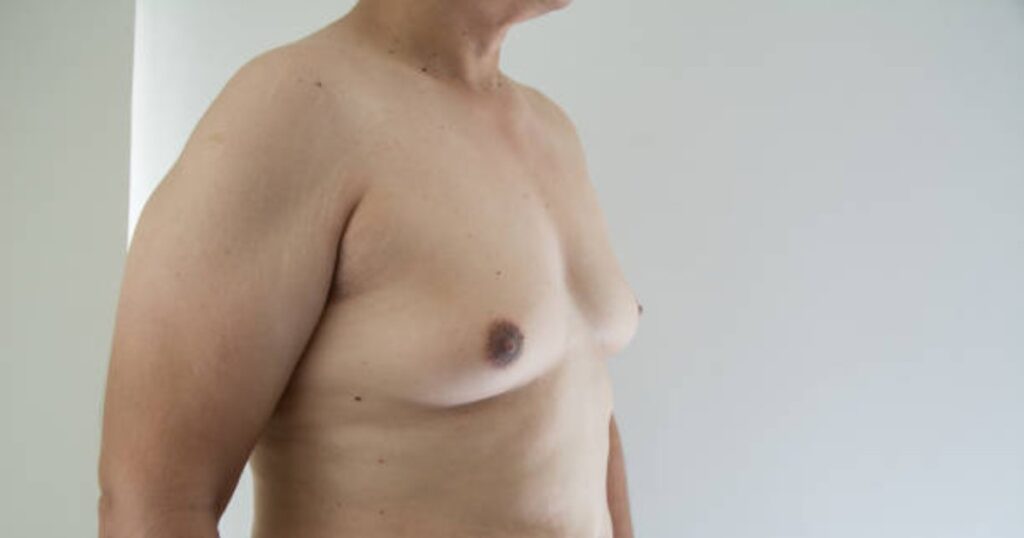
Gynecomastia is a condition in which a man has breast tissue that has developed, usually in adolescence or young adulthood. It can happen when the hormones produced by the body during puberty are not appropriately balanced.
Book A Consultation With Dr Tarek Bayazid
Installment Plan Available
The condition may be temporary, or it may continue throughout life. In most cases, the breasts are small and flat on the chest wall, but they can also be significant and firm. Some men with gynecomastia have enlarged nipples or are missing nipples altogether.
Gynecomastia can also occur after a surgery or illness that affects the pituitary gland, located at the brain’s base, and produces growth hormone and other hormones that signal cells to grow and divide.
Is It Possible for Hormones To Cause Breast Growth?
Hormones can play a role in the growth of breasts. This is because hormones are responsible for developing and maintaining breast tissue.
The most common cause of gynecomastia is increased testosterone levels due to anabolic steroid use or genetic factors. High levels of estrogen can also cause gynecomastia in both men and women.
What Male Hormones Are Used To Treat Gynecomastia?
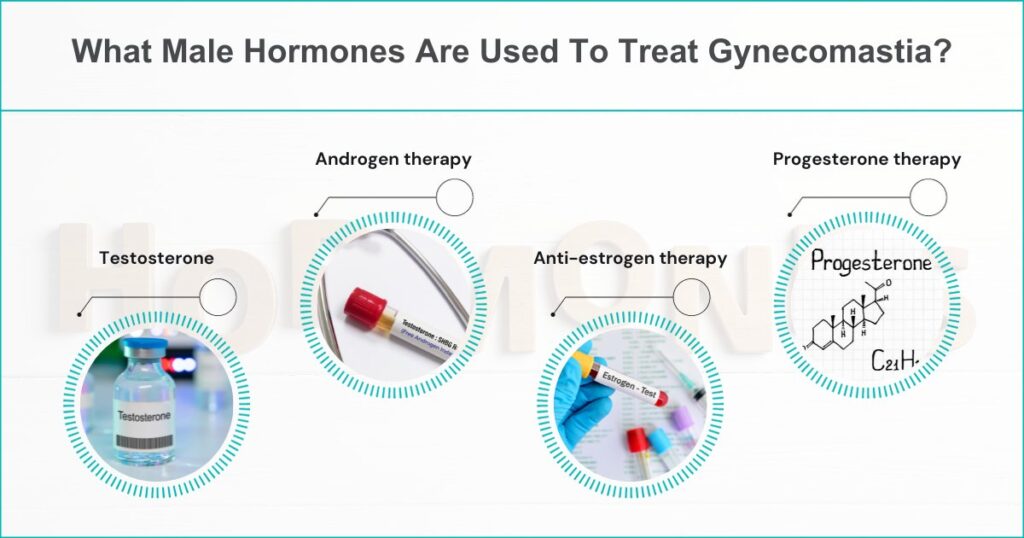
Hormone therapy can be a safe, effective, and convenient way to treat the condition. If you have been diagnosed with gynecomastia, the hormones may help reduce the size and shape of your breasts.
Some of the most common male hormones used to treat gynecomastia include:
Testosterone
Testosterone is the most effective medication for treating gynecomastia. Testosterone treatment is generally considered safe and effective in men with mild to moderate symptoms. Testosterone treatments are available in several forms, including topical creams, gels, and patches. If you are interested in testosterone treatment, you must talk to your doctor about the different options available.
If you do not want to use testosterone cream or gel, another option is to take synthetic testosterone injections at home. Injections are usually given every two weeks for three months. After that time, you will have to have another injection before another three months elapses. You may need to visit your doctor periodically for blood work during this period so that he can monitor your hormone levels and make sure they remain stable.
Androgen therapy
Androgens are male hormones responsible for male characteristics such as facial hair growth and deepening of the voice. Androgens also play a role in causing breast tissue to grow in boys who experience this condition.
Androgen therapy refers to any method of administering hormones to treat a disease or condition. You can perform androgen therapy through any route that delivers hormones directly into the bloodstream, such as an injection or an implant.
The most common form of androgen therapy is hormone replacement therapy (HRT), which uses natural or synthetic versions of the male sex hormones testosterone and dihydrotestosterone (DHT).
Anti-estrogen therapy
Anti-estrogen therapy is the most common treatment for gynecomastia. Estrogen is a vital hormone in regulating many body functions, such as growth and development, fat distribution, and sex characteristics.
When there is too much estrogen in the body, it can cause breast tissue to develop in men. This condition is called gynecomastia, or male breasts.
Anti-estrogen therapy blocks the effects of estrogen in the body by reducing its production or blocking its absorption into the bloodstream. Anti-estrogen medications include tamoxifen (Nolvadex), raloxifene (Evista) and anastrozole (Arimidex).
Progesterone therapy
Progesterone therapy is a hormone therapy that uses progesterone to treat gynecomastia. Progesterone is the primary female hormone in humans and other mammals, and it is also produced by the body naturally in men.
Progesterone helps to reduce breast tissue by interfering with estrogen’s ability to stimulate breast growth. It also acts as a suppressant of the male hormone testosterone, reducing its effects on the body and diminishing symptoms of gynecomastia.
Duration of Hormone Treatment
The length of medical therapy for gynecomastia depends on factors like the drug regimen and individual patient response.
Typical treatment duration falls anywhere from 3 months to over 1 year in more persistent cases, with selective estrogen receptor modulators (SERMs) usually trialed first, followed by other drug classes if appropriate.
| Treatment | Duration | Considerations |
| Testosterone therapy | Up to 1 year | For men with proven low testosterone contributing to gynecomastia |
| Androgen therapy (non-testosterone) | 4-6 months | Used if testosterone is not appropriate or ineffective |
| Anti-estrogen therapy (SERMs) | 3-6 months | First-line treatment in most hormone therapy cases |
| Progesterone therapy | Up to 6 months | Sometimes added to SERM regimen or used alone if ERMs fail |
Tests Required Before Male Breast Reduction Surgery?
Before a male breast reduction surgery takes place, a complete physical exam is necessary to determine if any other medical conditions may affect the procedure’s outcome. The surgeon will review your medical history and examination to confirm that you are healthy enough to undergo surgery.
The following tests may get performed:
PT/PTT – blood timing test.
This test measures how long it takes for the blood to return from the heart to the lungs after each beat and determines how long it takes for the blood to return from the lungs back to the heart after each heartbeat.
Furthermore, it is also a helpful screening tool for patients with heart disease who may be at risk of developing heart failure or arrhythmia during exercise.
Hemoglobin A1C- blood sugar level
This test measures how fast your red blood cells absorb glucose from your bloodstream, which determines your body’s ability to use glucose for energy production (glycolysis). A high hemoglobin A1C means your red blood cells have absorbed more glucose than they can metabolize and use for energy production (oxidation).
Chest X-ray
An x-ray will determine whether there is enough tissue in your breast area to provide adequate support for the mastectomy scar after surgery. This test can also help resolve any abnormalities or tumors in the chest area.
Imaging procedures
These procedures allow physicians to view internal structures of the body without making incisions. Common examples include CT scans and MRIs (magnetic resonance imaging), which use magnetism rather than radiation to produce images of organs and tissues within the body cavity.
Who Is a Good Candidate for Hormone Treatment for Gynecomastia?
You must consider several factors when determining if hormone treatment is proper for you. These include:
- Your age. The younger you are, the more likely your gynecomastia will resolve on its own.
- The severity of your condition. If you have a large amount of breast tissue, your surgeon may recommend hormone therapy as a first-line treatment.
- Your medical history. If you have other medical conditions like diabetes or high blood pressure, your doctor might recommend hormone therapy.
- The type of surgery you have had done. Your surgeon will discuss the best course of action with you after they perform a physical exam and check for signs of cancer in your breasts (such as lumps).
What Should I Expect During and After the Treatment?
The first phase of the procedure is called a “warm-up.” The doctor will numb your breast area with local anesthesia and then insert a surgical needle. The doctor will then remove tissue from your breast with this needle.
After that, they will use a thin tube to massage the area where they remove the mass, which will help remove any fluids in that area. The doctor may also use special bandages to help reduce swelling.
The second phase of the procedure involves injecting filler into your breasts. In this case, it’s usually a saline solution that helps make your breasts look fuller than before surgery.
You should expect some soreness after treatment for gynecomastia and may experience some bruising around your incisions at first. You’ll also be required to wear protective clothing during healing time to prevent infection from setting in while suturing takes place.
What Are the Risks of This Treatment?
Depending on your treatment, you may experience some side effects after the procedure. You should expect some pain and discomfort during the initial recovery period. In addition to pain and swelling, other common side effects include:
| Potential Complication | Description |
| Elevated Blood Pressure | If blood pressure is raised too quickly after surgery, you might experience dizziness or lightheadedness. |
| Allergic Reaction | Rare reactions can occur if you have sensitive skin or allergies to certain medications used during surgery. |
| Infection | When not enough tissue is removed during the operation, it can lead to complications in the healing process. |
Start Your Treatment Today!
The condition of gynecomastia is a problem that affects thousands of men each year. Fortunately, there is relief for these men who have suffered this embarrassing condition.
If you want to treat the Gynecomastia and get rid of it, then contact Dr. Tarek Aesthetics. They will give more information about how you can get rid of it with the help of Hormone Treatment for Gynecomastia and how you can live your life free from embarrassment. Find out about the cost of Gynecomastia In Dubai
Frequently Asked Questions and Answers
How do I know if I have gynecomastia?
You may notice that your breast tissue is swollen and tender to the touch on one or both sides of your chest. Your nipples can also be tender. If you have a lot of noticeable swelling, you may want to see a doctor for a complete evaluation.
What are the symptoms of gynecomastia?
The symptoms of gynecomastia are usually caused by excess estrogen in the body that the body’s enzymes have not broken down. Gynecomastia can occur at any age but is more common in teenage males as well as middle-aged who have high levels of testosterone in their bloodstream.
What is the best way to treat my gynecomastia?
There are many different options available, including surgery and medications. However, your health care provider is the best person to decide on your treatment.
How can I prevent my gynecomastia from returning?
You can lower your risk by avoiding situations that could increase breast tissue in the first place.
Is there any way to treat it naturally?
There are several ways to treat hormone imbalances without medication or surgery. The most common is diet and lifestyle changes, which can help naturally balance your hormones. You may also want to try natural supplements that help reduce the symptoms of your condition.
